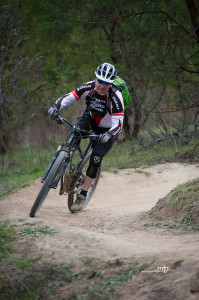Established mountain bike and hiking trails generally have rules or codes that you must follow if you are going to use them. Whether you are using designated mountain biking trails or not, you should be using your head. The following suggestions are guidelines that can help you have a safer and more enjoyable experience on the trail:
Bring Proper Gear
When mountain biking, you must always wear a helmet and always bring proper clothing and shoes. If mountain bike-specific outerwear is not part of your budget, wear clothes that will appropriately protect you from crashes and will be suitable for the weather. Minnesota’s Department of Natural Resources provides a helpful list of gear to bring when you are heading out on the trail:
- Bike tools
- Cell phone
- First aid kit
- Food and water (bring extra)
- Gloves
- Helmet
- Lights (flashing) for evening/night visibility
- Map/compass
- Rain gear
- Eye safety or sunglasses
- Sunscreen
- Tire pump, patches, and a spare tube
Don’t Go Alone
When you can, avoid mountain biking alone. The risk of injury is too great to tackle the mountainside by yourself.
Know Your Trail . . .
Be aware of your surroundings and of others who might be using the trail. Know how long you will take and be sure to inform those close to you how long you estimate you will be gone. If you don’t know the trail you will be using, take it slow until you have learned what to expect. Ride open trails and stay away from them if they are wet or otherwise soft.
. . . And Basic First Aid
Mountain biking takes you to remote places where help may not be immediately available if the need arises. Whether it is taking a course, buying a book, or learning from a friend, basic first-aid techniques can help save your own life or that of a friend.
Adjust Your Bike
Make sure as you are riding that you are switching gears properly, adjusting your seat when necessary (such as lowering your seat on descents to keep a proper center of gravity) and lowering your tire pressure for better traction and control.
Brake Wisely
Especially when descending, know how much and how often you need to brake. This, of course, requires practice. Good riders know how to shift their weight to provide enough balance for the brakes on both your front and rear wheels in order to keep you safely riding and to prevent you from flipping forward over your handlebars or skidding out of control.
Relax
Tightening up or increasing your tension while riding can be dangerous. Staying loose will help you to react more quickly to obstacles ahead and will allow you to shift your weight more easily to absorb the sharp turns and corners on trails. Staying relaxed will also help you stay in control of your steering, preventing a loss of control or oversteering your bike.
Stay Focused
Mountain biking requires intense focus. Even if you know the trail well, you must be ready for unanticipated obstacles that may be in your path. Always be on the lookout for surrounding animals, trail obstacles, and other riders. Do not ride when you are tired or distracted, and do not attempt terrain that you know it too difficult for you.
Sources: Active.com, AdultBicycling
Photo courtesy of: Mark Turner

